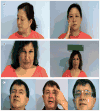Sensory aspects of movement disorders
- PMID: 24331796
- PMCID: PMC4759644
- DOI: 10.1016/S1474-4422(13)70213-8
Sensory aspects of movement disorders
Abstract
Movement disorders, which include disorders such as Parkinson's disease, dystonia, Tourette's syndrome, restless legs syndrome, and akathisia, have traditionally been considered to be disorders of impaired motor control resulting predominantly from dysfunction of the basal ganglia. This notion has been revised largely because of increasing recognition of associated behavioural, psychiatric, autonomic, and other non-motor symptoms. The sensory aspects of movement disorders include intrinsic sensory abnormalities and the effects of external sensory input on the underlying motor abnormality. The basal ganglia, cerebellum, thalamus, and their connections, coupled with altered sensory input, seem to play a key part in abnormal sensorimotor integration. However, more investigation into the phenomenology and physiological basis of sensory abnormalities, and about the role of the basal ganglia, cerebellum, and related structures in somatosensory processing, and its effect on motor control, is needed.
Copyright © 2014 Elsevier Ltd. All rights reserved.
Conflict of interest statement
We declare that we have no conflicts of interest.
Figures




References
-
- Bayulkem K, Lopez G. Clinical approach to nonmotor sensory fluctuations in Parkinson’s disease. J Neurol Sci. 2011;310:82–85. - PubMed
-
- Chaudhuri KR, Odin P, Antonini A, Martinez-Martin P. Parkinson’s disease: the non-motor issues. Parkinsonism Relat Disord. 2011;17:717–23. - PubMed
-
- Nijs J, Daenen L, Cras P, Struyf F, Roussel N, Oostendorp RA. Nociception affects motor output: a review on sensory-motor interaction with focus on clinical implications. Clin J Pain. 2012;28:175–81. - PubMed
Publication types
MeSH terms
Grants and funding
LinkOut - more resources
Full Text Sources
Other Literature Sources
Medical

